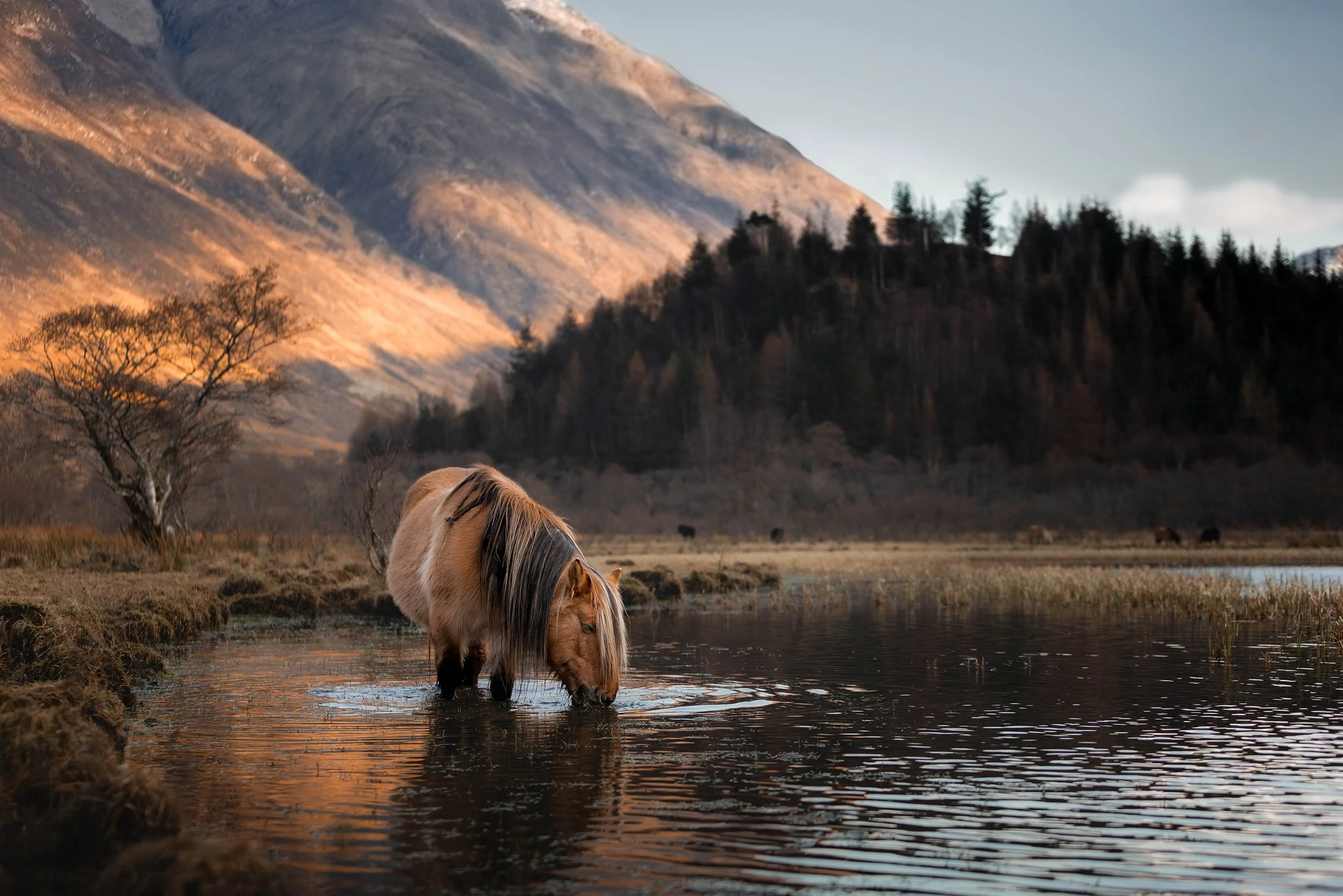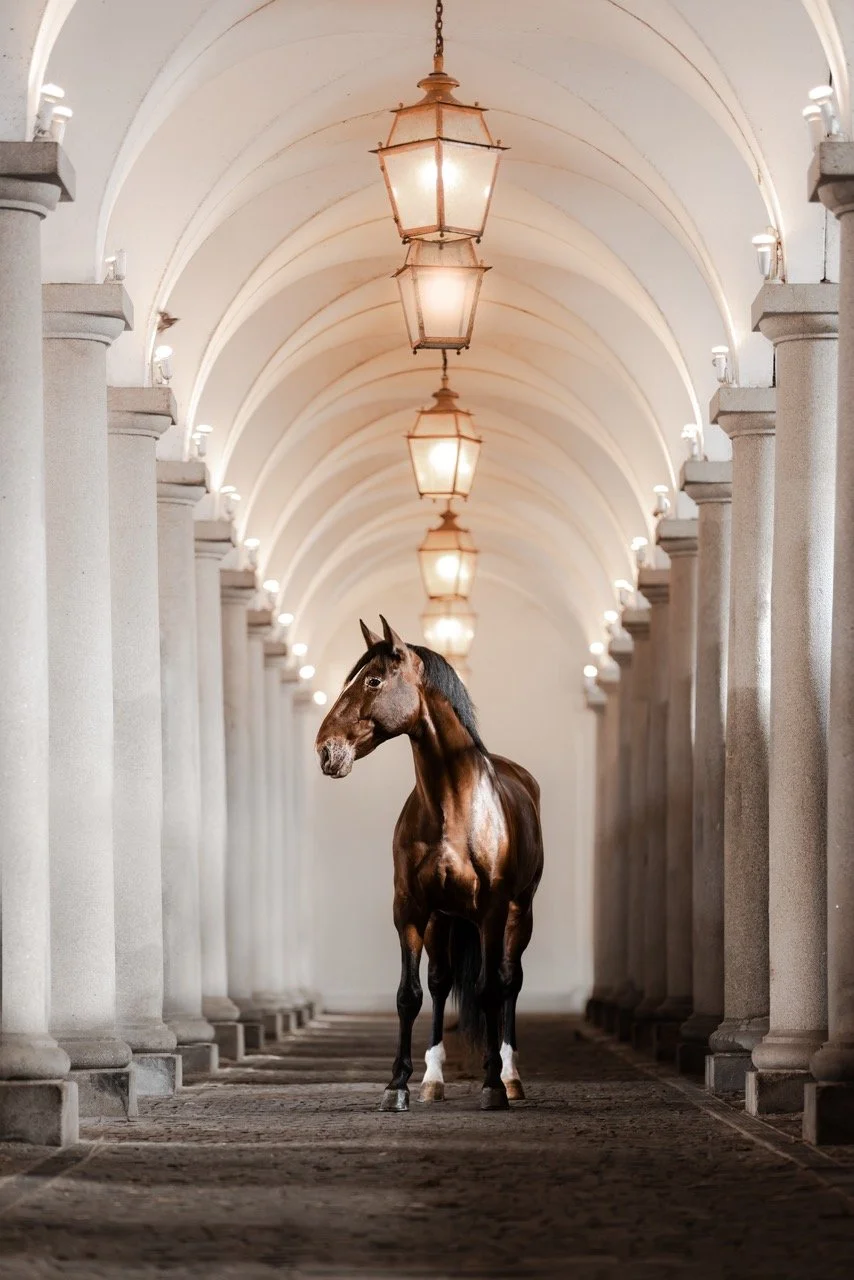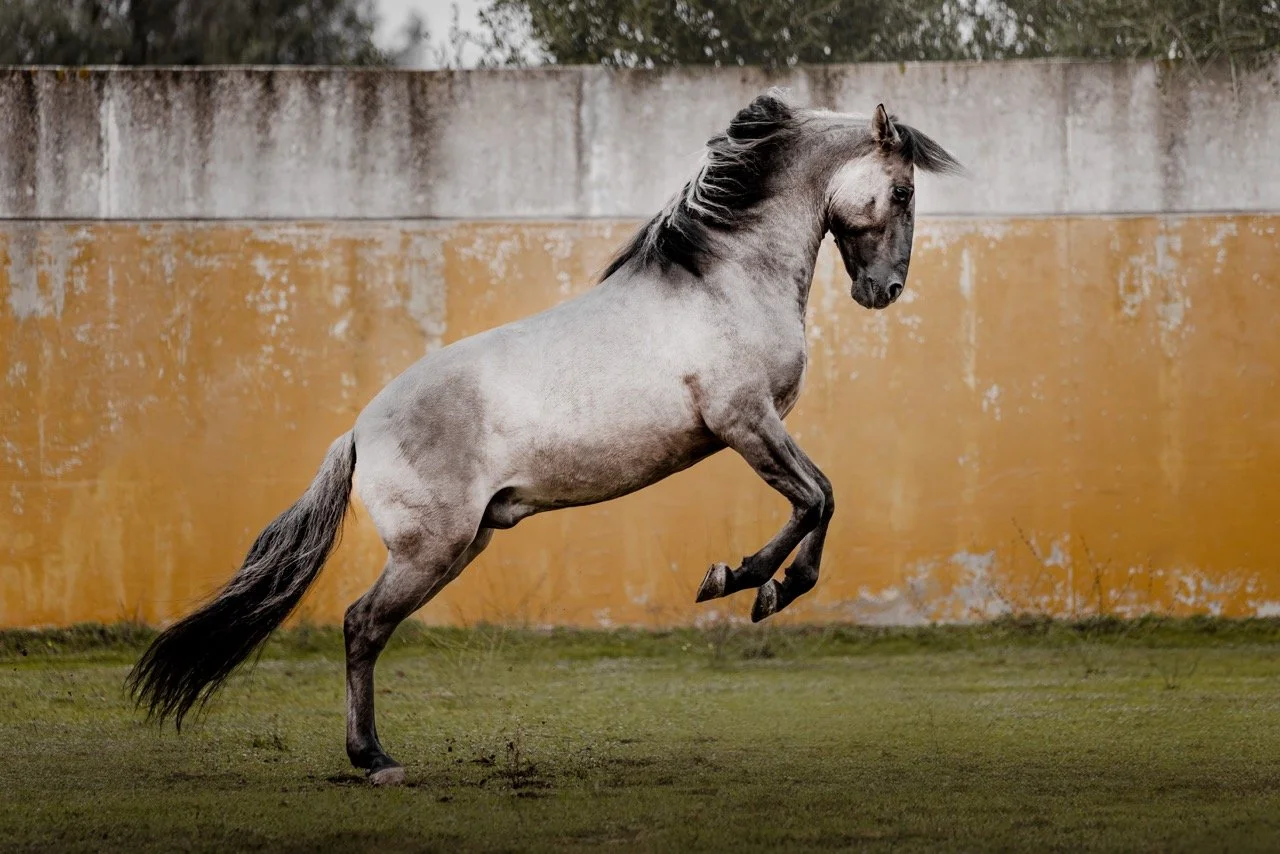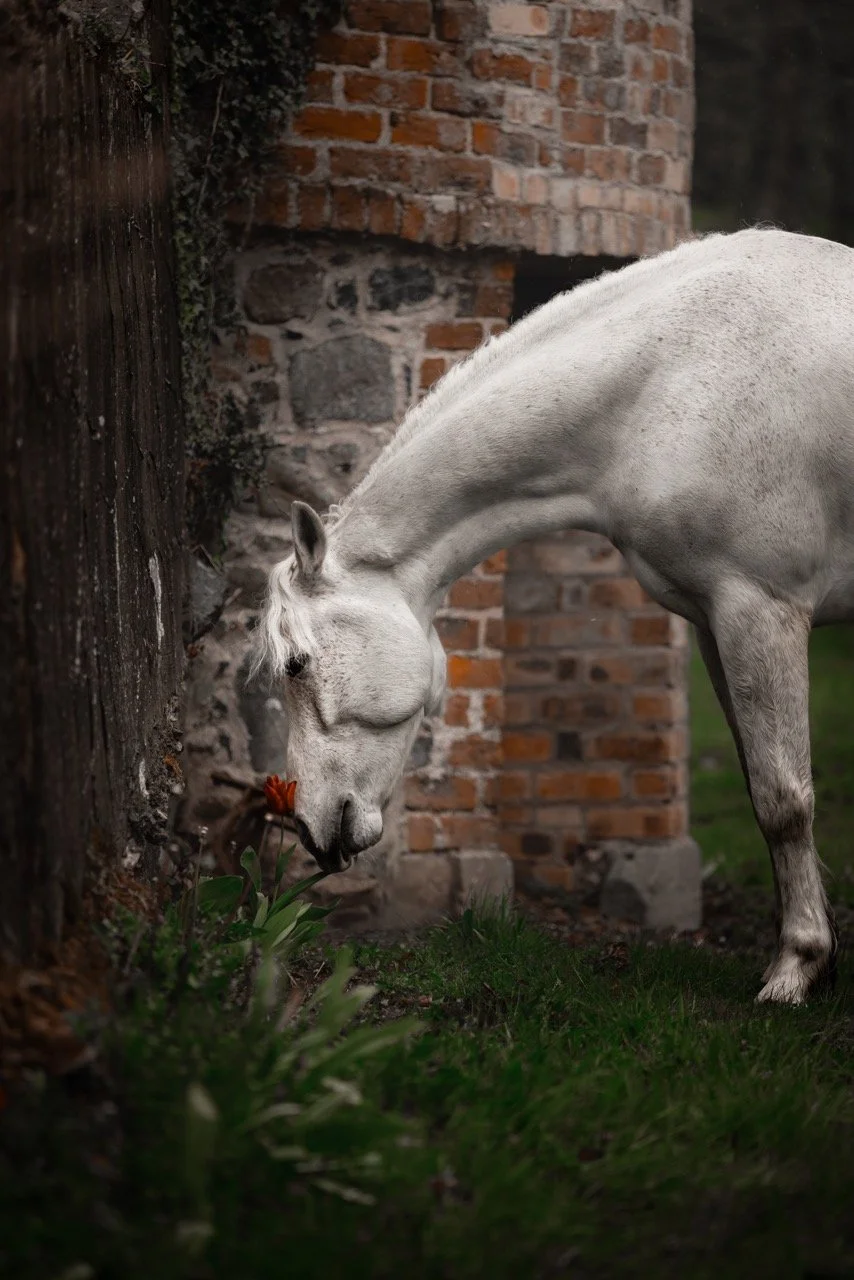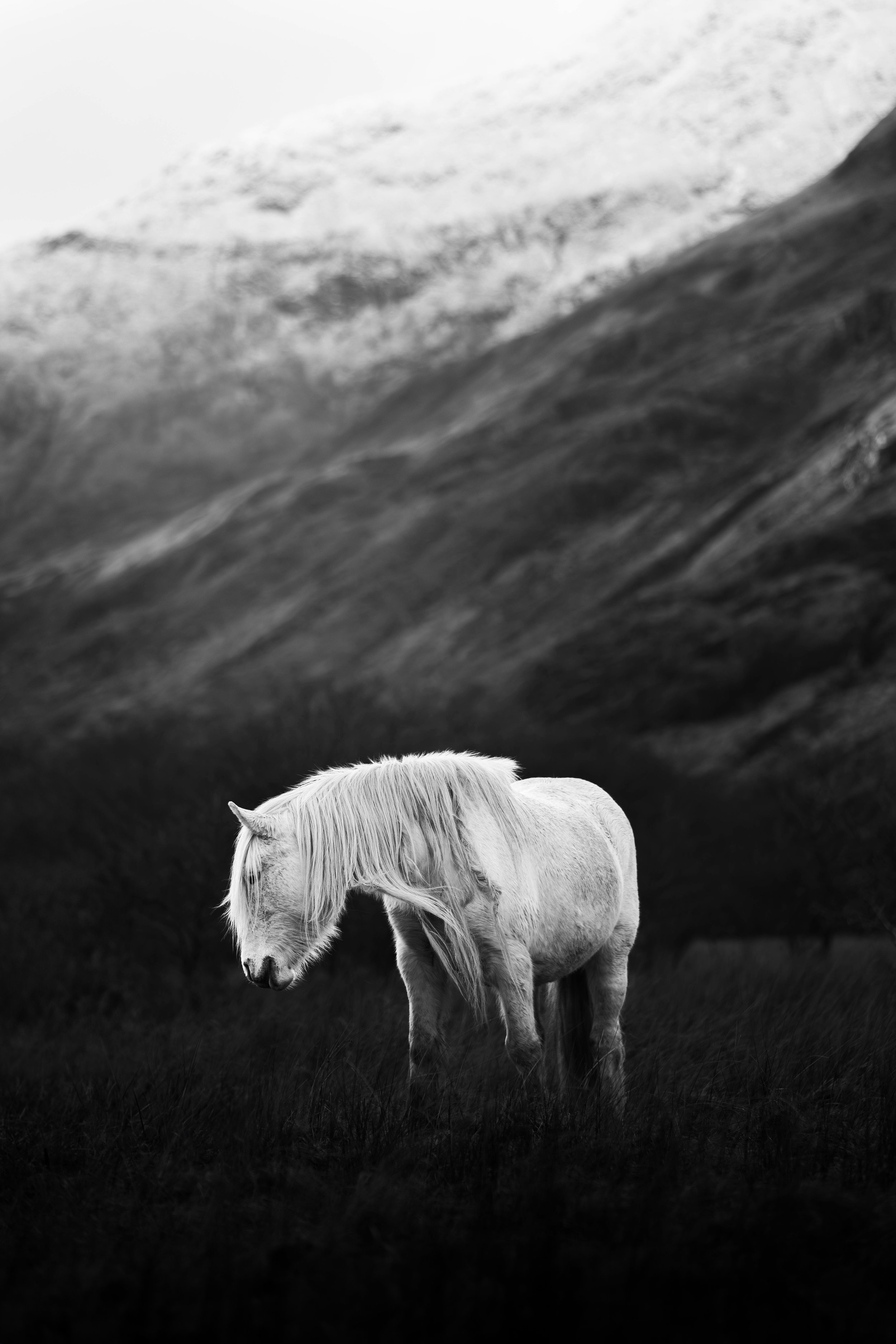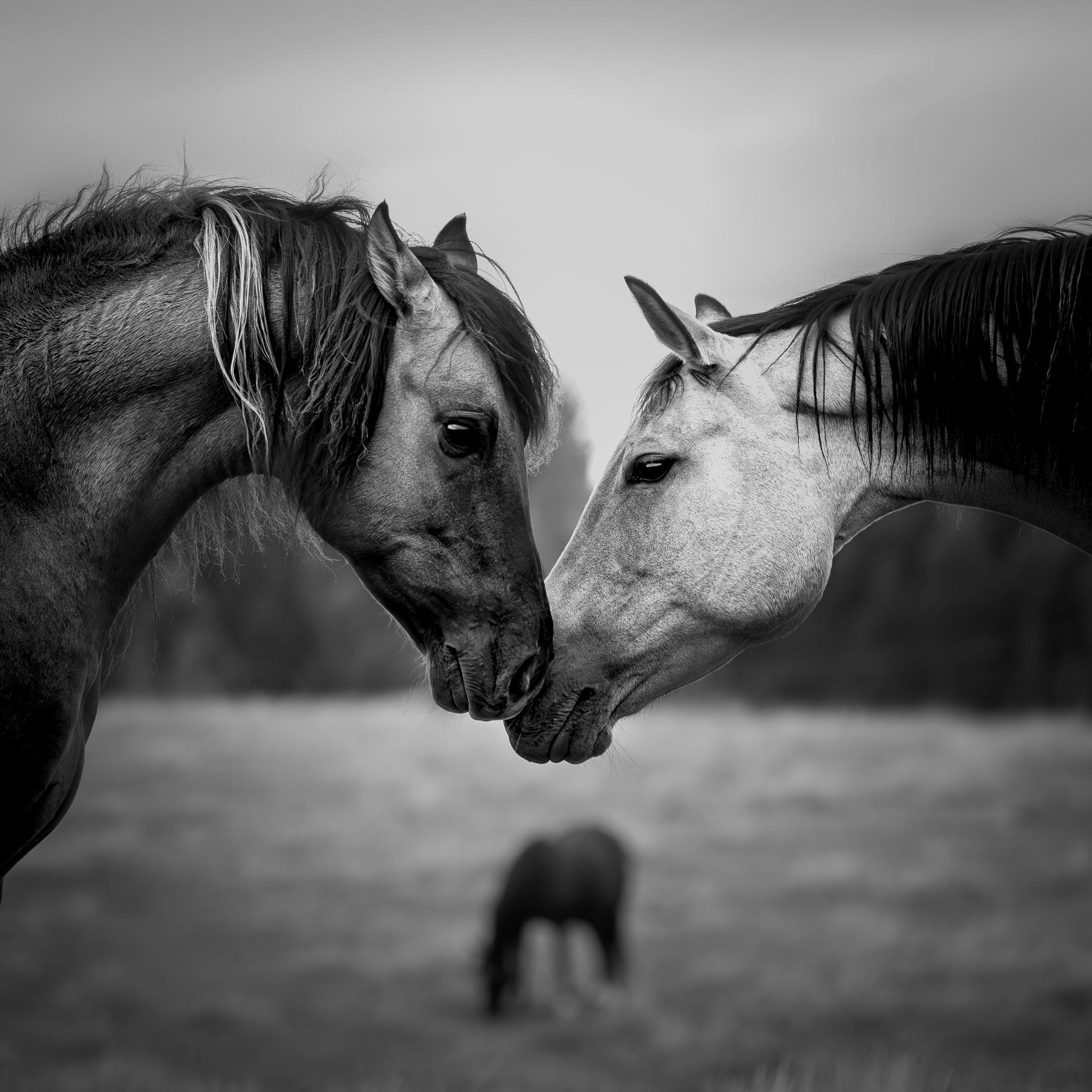
KATJA JENSEN
EQUESTRIAN PHOTOGRAPHER
In a world that moves too fast and speaks too loud, photographer Katja Jensen has carved out a quiet, reverent space—where horses roam free and their unspoken language is captured in raw, timeless frames. Raised on a farm and rooted in a deep sensitivity to the world around her, Katja's journey into equestrian fine art photography is more than a career—it’s a calling. With a camera in one hand and her heart tuned to the rhythm of hooves and wind, she travels the globe to document horses in their most natural, soulful states. Her work doesn’t just show horses—it honors them.
EARLY YEARS
Can you tell us about your early experiences growing up on a farm and how that shaped your connection with horses?
As many others who find peace and solace with animals, I was an introverted child. I didn’t seem to understand or fit into our society. The world wanted me to toughen up, and stop feeling as much as I did.
The horses became my escape. Simply because they didn’t demand that I changed. They accepted me for who I was. If I had grown up in the city, I’m afraid I would have lost my soft heart. The horses helped me retain that ability to feel everything a little bit deeper.
On the farm there was a stillness that I needed. It helped me discover how magic is often in the little things that we tend to forget and overlook in a busy world. Horses don’t live in that same busy world. They’re present right here, right now.
What sparked your interest in photography at such a young age—was it the horses, the camera, or both?
Without a doubt both. The horses were the physical subjects of my passion, and the camera provided the ability to capture those moments as I saw them. It was the perfect combination.
Besides spending most of my time outside in the fields, I was also quite interested in programming, coding and such. From an early age I had fun creating websites and editing photos, which definitely helped me further develop my skills in this area and helped keep things interesting and fun.
Interview by Lindsay Hunter
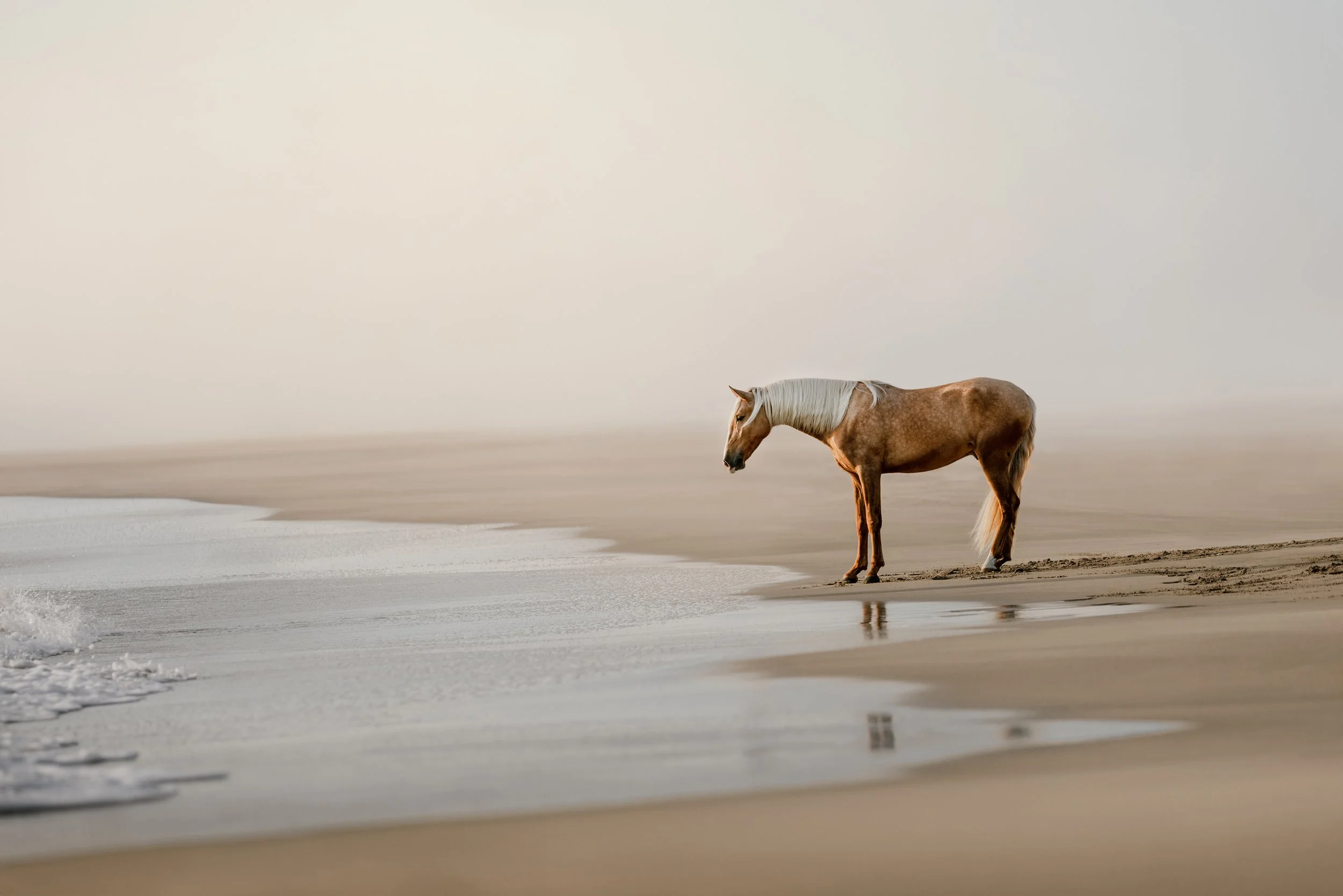
ARTISTIC VISION & STYLE
Your preference is to photograph horses in their natural environment—what draws you to that style?
For many years I photographed horses with their humans, and I loved capturing that special bond. However as I’ve ventured farther into the Fine Art side of photography, I find that keeping the images minimalistic and timeless, makes them more artistic than personal.
In a world full of opinions in the equestrian space, I strip away tack and human-made settings to create images that speak universally to every horse lover — no matter their background or discipline.
How do you think photographing horses in the wild or semi-wild state captures their essence differently than in a more staged setting?
Because this is where they came from. Horses weren’t made for concrete roads and wooden fences. Taking them back to nature in my photos feels like the greatest way of honoring them and bringing their true nature back into the light. Stripping my images down to the very core, helps create stronger photographs and messages.
Do you have a favorite location or type of landscape to photograph horses in?
I gave this a lot of thought, and I don’t think so. This is a part of what drives me to visit so many parts of the world; I really enjoy exploring different regions and landscapes. It always baffles me how well horses fit into all of them.
PROCESS & APPROACH
Can you walk us through your typical process for planning a photo shoot—from scouting locations to working with the horses?
Honestly, this question is always a little tricky — because I rarely start with a fixed plan. My process is much more intuitive. Sometimes it's a movie frame that sparks something, other times a piece of music, a fleeting mood, or even the feeling of a landscape I’ve dreamt about.
When traveling I always research the country, culture and landscape beforehand. My wish before traveling is often the opportunity to get the horses in the landscapes that represent the country best. From there I research horse breeders, owners and wild horse locations to see what contacts I can reach out to.
When it comes to working with the horses, I adapt to their energy in the moment. I observe, I wait, and I let them lead. That’s when the magic happens — when the horse is allowed to be itself, and I’m simply there to witness and translate that into an image.
How do you build trust with the horses you're photographing, especially if they’re not familiar with you?
When I photograph horses in photo halters, and we ask them to stand or move in certain places of our choice, I’m highly alert to how the horse is reacting to what we ask of them. Keeping the session low stress and an enjoyable experience for the horse, reflects in the photos and in their expressions especially.
Being out in the pastures or open areas where the horses roam free, I find that they often are quite curious about me. Especially since I just sit down and observe, and don’t intend to handle them in any way. Most horses quickly realize that I’m no threat, and are happy to let me join them
What’s your approach to capturing emotion or personality in your horse portraits?
Letting the horse be first of all. We tend to want to control much of our horses’ behaviors, but by doing this we also kill many opportunities for them to show their personality. I rarely aim for the classic portrait with the horse standing; ears perked forward and an alert expression. There are so many missed opportunities in just observing – giving them the freedom to express themselves however that may look.
In terms of photography, light plays a crucial role. Natural light is my only tool here. I try to aim for morning or evening light, and avoid harsh, direct sunlight. Overcast and rainy days can add to a more moody atmosphere as well.
How has traveling influenced your photography and your creative direction?
Travel cracks your heart and mind wide open. While the main focus is always the horses and the landscapes, I’ve also learned so much about different cultures — and the people within them. I grew up in a small village, where people can seem small-minded and intolerant. Traveling shows so many different sides of life, that can’t help but creep into my visions and photography as well.
The ponies helped me realize that I wasn’t meant to be living this life for others.
KATJA JENSEN
Visiting Canada I felt the rush of open prairies and witnessed the harsh but beautiful lives of multi-generational ranchers. Portugal was deeply rooted and influenced by its history, both bad and good. I saw some of the finest horsemanship and a feel I’ve rarely met anywhere else.
REFLECTIONS & VISION
Do you have a favorite image you’ve ever taken—one that holds a special meaning or story?
My image “Ancient Survival” will forever hold a special place in my heart. On this trip I captured photos that I had dreamed of for years, but more importantly I got crystal clear on where I wanted my photography to take me. The ponies helped me realize that I wasn’t meant to be living this life for others.
What’s next for you—are there any upcoming travels, projects, or ideas you’re excited to pursue?
I’m revisiting a country later this year that feels like an old friend of mine, but I can’t reveal much more right now. I have high hopes for the trip, and expect it to become one of my wildest yet.
In the coming months I will also be finishing and releasing my upcoming collections “Hidden Heartlands” which will feature the hardy Connemara ponies and majestic Irish Cob horses of Ireland.
Katja Jensen’s photography invites us to slow down, breathe deeply, and reconnect with the grace of the natural world—through the eyes of the horse. Her lens captures more than silhouettes in misty fields; it reveals stories of spirit, freedom, and the quiet strength that binds horse and human. As she continues to explore hidden heartlands and wild corners of the earth, one thing remains certain: Katja’s work will keep reminding us of what it means to feel deeply, see clearly, and honor the untamed.
